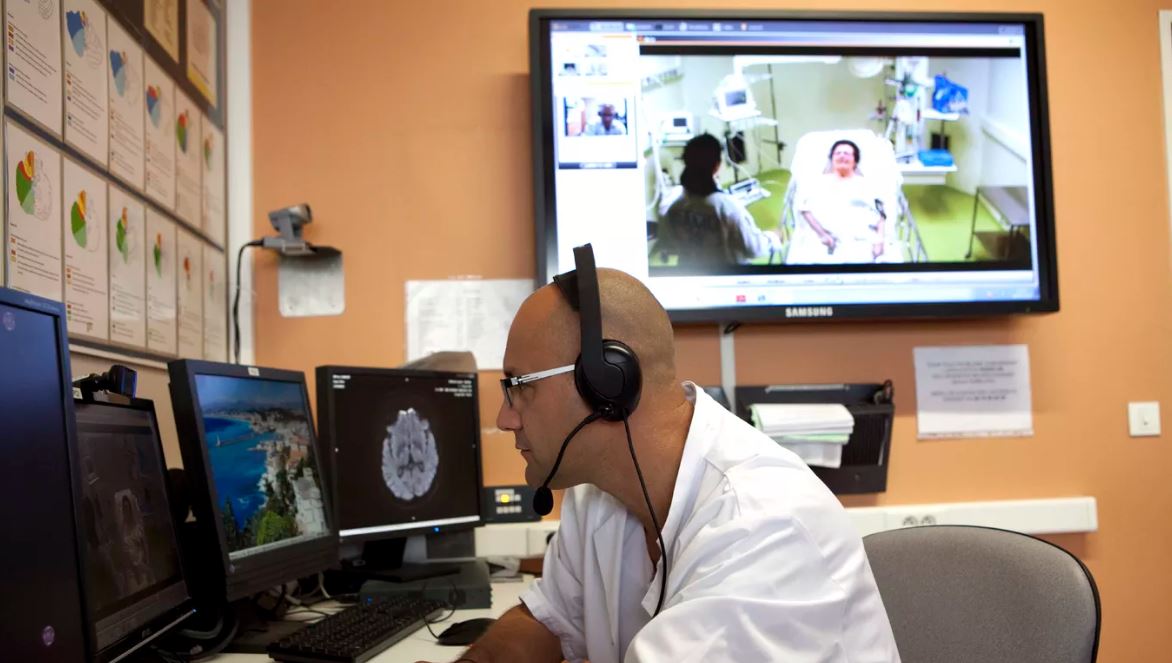As boomers age, experts predict the telehealth market will grow from a $14.3 billion industry in 2013 to a $36.2 billion industry in 2020. Analysts expect that 7 million patients will use telehealth services this year, up from 350,000 in 2013.
Medicare Expands Telehealth Benefits (AARP)
Some beneficiaries can access care at home, especially for chronic medical issues
by Barbara A. Gabriel.
Analysts expect that 7 million patients will use telehealth services this year, up from 350,000 in 2013.
Some Medicare beneficiaries will have more access to telehealth services that can monitor their health status, diagnose illnesses and adjust treatments without requiring them to leave their home, under a provision in the new congressional budget.
All Medicare beneficiaries will be eligible for tele-stroke evaluations. For example, if an emergency medical technician suspects that an individual is having a stroke, a doctor will be able to evaluate the patient’s symptoms remotely and the EMT may begin treatment on the way to the hospital. And now doctors can virtually monitor, and manage the care of, all their Medicare at-home dialysis patients. Previously, these services were available only to Medicare enrollees who lived in remote areas.
The legislation also allows Medicare Advantage (MA) plans to expand their telehealth coverage to include a wider array of services, such as checking on a patient’s blood pressure or changing a medication dose. Patient advocates say that being able to deliver efficient, effective in-home care to those with chronic conditions could go a long way toward both improving outcomes and cutting costs.
Telehealth can be particularly useful for the more than two-thirds of Medicare beneficiaries who live with multiple chronic conditions, such as heart disease, cancer, diabetes and stroke. Being able to access telehealth technologies can reduce the number of times a patient goes to a doctor’s office, which can be particularly helpful for older adults with mobility issues.
The telehealth provisions in the budget bill were part of the CHRONIC (Creating High-Quality Results and Outcomes Necessary to Improve Chronic) Care Act that passed the Senate last year. AARP has been a strong supporter of that legislation. “The expansion of telehealth will provide millions of Medicare beneficiaries, especially those with multiple chronic conditions, better access to important and much-needed services,” says Joyce Rogers, AARP senior vice president for government affairs.
As boomers age, experts predict the telehealth market will grow from a $14.3 billion industry in 2013 to a $36.2 billion industry in 2020. Analysts expect that 7 million patients will use telehealth services this year, up from 350,000 in 2013.
Krista Drobac, executive director of the Alliance for Connected Care, a medical technology advocacy group, says the new law doesn’t go far enough in making telehealth services available to all Medicare beneficiaries. “Medicare Advantage’s 19 million beneficiaries are only one-third of all Medicare recipients,” Drobac observes, adding that her organization’s next fight is to secure more telehealth coverage for all of Medicare’s 58 million members.












